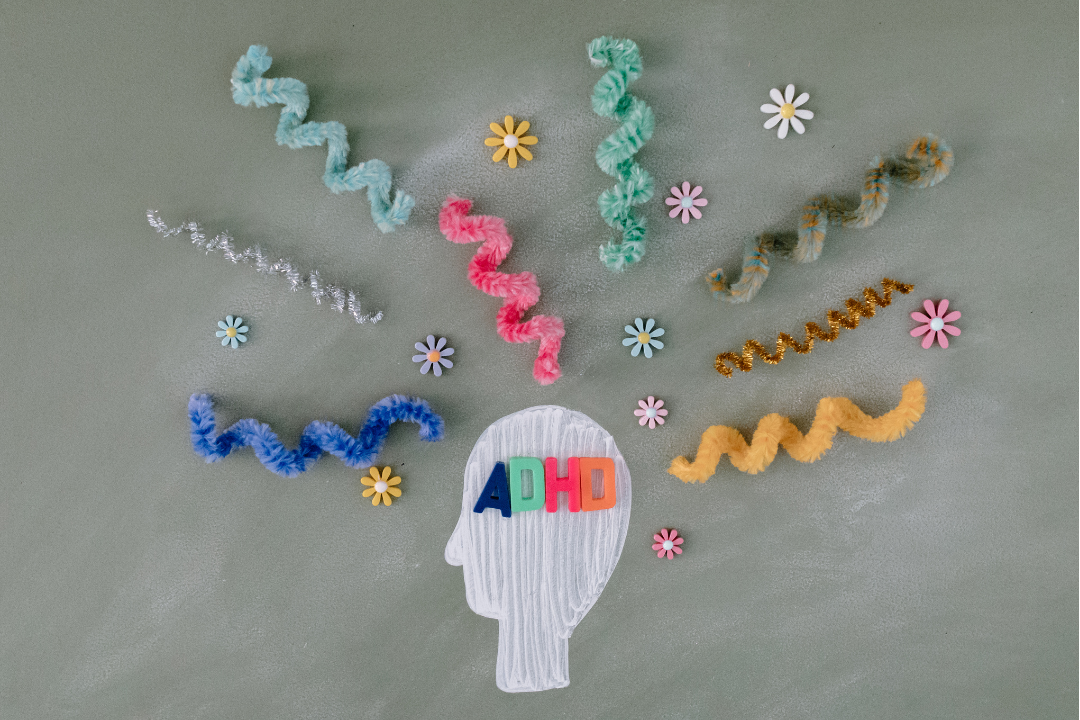Tips for the ADHD Brain
In the late 70s, ADHD hadn’t been invented yet. Or, at least, it wasn’t known to the educational powers that “be” in my grade 5 classroom in London, Ontario. I sat in a “quad” room. Essentially, a gymnasium divided by half-moon walls that allowed for bucket loads of noise to slip easily under and above the barrier. Four teachers spoke to four full classrooms. Pencil sharpeners ground steadily from the four corners of the gym. Chairs squeaked, rolled and scraped along the flooring, and the fluorescent lighting flashed sheets of blinding light that kept my eyelashes fluttering in an attempt to keep time. I was in prison. Not only did I have no hope of hearing what MY teacher was saying from the front of MY class-division, I had the unfortunate awareness instead of what was happening in the other three areas adjacent.
Like any naive, bold, slightly over-indulged child would, I marched into the Principal’s office and told him I felt it best that we didn’t waste any more of my time or his. I was quitting grade 5. I was simply “too stupid” to be in his school.
After review of my recent aptitude testing, the Principal decided I required a “gifted learning program”. What he really meant was that in some areas I had achieved off the charts. In others, great deficits, and they still hold true today. But at the time, I was fortunate enough to join a group of kids who learned by doing.
We didn’t read about rocks or dinosaurs in books. We drove to dig sites and became full-fledged, albeit neophyte, Archaeologists. Our math classroom was filled with wooden structures of varying shapes and sizes with which we could physically manipulate equations and arrive at answers, in a way that held the pattern in our brains for life. We gained practical knowledge of nearly any lesson applied, and in this achievement, we felt smart. We were capable. We became creative problem-solvers and forward thinkers. There is only one difference between me and the thousands upon thousands of other grade 5 students out there who have suffered under the same attack of OVER-STIMULATION in the classroom, and that is the opportunity to be removed from that classroom.
ADHD brains are fascinating and fascinated. The world is a sea of sounds, smells and sights that inspire innovation, and I can’t think of a better way to put them to use. But learning to cope with a world that can’t yet accommodate creative classroom settings (or workplace settings, if you’re an adult with this brain) can be frustrating at best. Here are some tips I’ve stumbled upon.
1) Clear clutter.
Walk around each room in your home, your office, your car, your children’s rooms and play areas. Lay your hand to each item and if you don’t LOVE it, it’s gone. Recycle every item you can, but gift, donate, or dispose of it immediately. ADHD brains love to shuffle clutter from one place to another, and shuffling does nothing but add to the cluttered thinking. Purge anything unnecessary or unloved.
2) Clear noise pollution.
The ADHD brain (I believe everyone’s brain) requires blocks of silence or soothing music in order to achieve appropriate focus upon the task at hand. Classical, instrumental, and the sounds of nature are all favourites for those who find complete silence deafening. Turn off the news, the television, the radio stations pumping out junk lyrics, and if you really want to step it up, buy noise-cancelling headphones to wear while you work on particular projects that require intense focus.
3) Write it down.
Have one central location to keep notes, plans, appointments, holidays, birthdays, “Things To Do”, etc. When asked about whether or not I’m available to attend a special event, I have to consult my fridge. Large calendars with loads of space in each block are helpful, as are page-a-day personal planners, although transporting the book itself from place to place can prove a challenge. I really believe ONE spot for scheduling is best, and that may mean you have to get back to someone a little later, but ADHD brains typically over-promise and under-deliver in any case, so this time to digest a plan is also helpful.
4) On that note, DO LESS.
The world is filled with possibilities and all of them enchanting. “YES” can be heavily overused in an attempt to swallow up every opportunity. But then comes the crash. ADHD brains require more quiet/alone time each day than the average person. That time to slow things down allows for all of that stimulation to “catch up” and digest. Do what you’d LOVE to do, but do less.
5) Grounding.
Participate in activities like hiking, canoeing, swimming, gardening; really anything outdoors and particularly in nature, helps to soothe the brain. Although nature has chaos all on its own, it is a calming energy that is necessary.
6) Simple food.
Remove sugars, dyes, sweeteners, and any sort of processed foods from your diet. When you are dealing with a highly sensitized system, remember it wants to recognize what it’s dealing with. For this reason, any additives or preservatives can trigger a panic response in the brain, followed by a hyperactivity in the body. The closer foods are to their original state, the calmer the mind.
7) Generate a bedtime ritual.
Begin using the highly stimulating senses to your advantage. First, be sure your sleeping space is clutter free. Remove all electronics that offer a slight buzz or hum. Make your bed each day and turn down your bed each night. An hour before bed, sip an herbal tea and take a warm bath or shower with lavender, telling your physical being to settle. Climb into bed with your pen and paper and jot down any mental clutter that’s swarming around in there. Turn it over on your bedside table and read a “fluffy’ book. Nothing important, just a gentle ride. When your eyes grow weary, turn off your bedside light. Be sure you sleep in complete darkness or wear an eye covering and invest in a high percale set of sheets.
8) Hype yourself up.
Write down a list of things you ARE very good at. Things you have come to realize are exceptional skills, and leave them out on your bathroom mirror or refrigerator. There is too much focus on correcting or changing the ADHD brain, and not nearly enough on celebrating this creative engine at work. Add to the list every chance you get.
9) Natural and free-flowing wardrobe.
Wear clothing that is primarily made of natural, comfortable fibers. Synthetic fibers can do a number on gently agitating the system, as can tight belts or bands. Free-flowing, comfortable, breathable clothing that becomes a part of you is best. This includes footwear!
10) Meditate.
This can take on many, many forms, but I strongly advise that you research a very short guided meditation series to try daily. 10 to 20 minutes maximum. Use that eye covering and lie in one spot that you return to every day. Play it on a gentle level in a quiet setting and don’t concern yourself with the words. Learn to breathe as suggested, and in time the brain will create a short-cut to this peaceful and aware place that it can take anywhere it goes.
Kim Sargent
Clinical Director
Canadian Family Health Counselling

